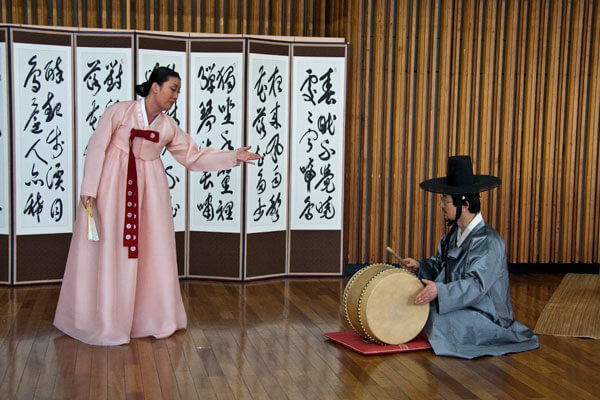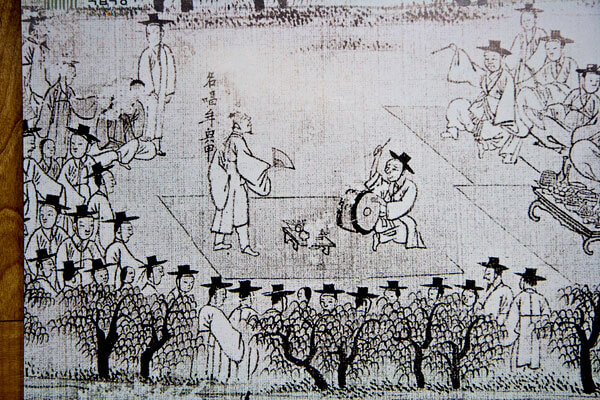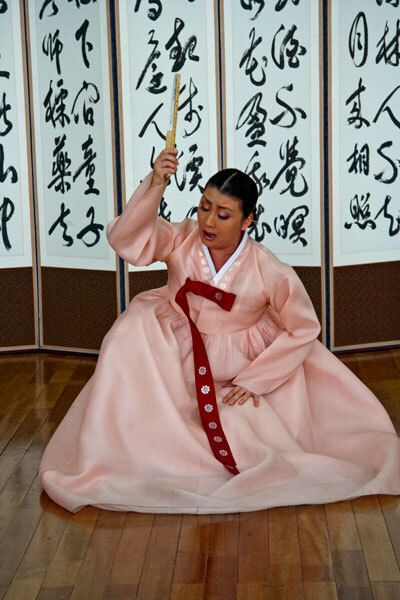Pansori, the Art of Storytelling
Pansori is Korea’s still thriving storytelling tradition. In pansori a singer, who employs stylised speech, expressive declamation and heartbreaking singing, narrates well-known epic stories accompanied by a drummer. Originally, pansori artists were men, but nowadays female singers are also more common.
- Communication between the accompanying drummer and the singer is of the utmost importance in the pansori performance, which is, to a great extent, improvised Jukka O. Miettinen
Like storytellers in general, pansori singers also create intensive contact with the spectators, who may shout comments and approving comments during the performance. The drummer too has active contact with the performer. The only prop that the singer handles is a large fan.
The History
The early form of pansori was the creation of public entertainers, called changu. During the middle part of the Choson Dynasty (1392–1910) they also added sung storytelling as a kind of comical interlude to their repertoire of music, dance and acrobatics.
- An old ink painting showing an early outdoor pansori performance, Museum of Korean Traditional Music Jukka O. Miettinen
In the 18th century pansori was also accepted by the educated elite. During that time the pansori repertoire consisted of various stories, many of them derived from Chinese folklore. The patronage of the upper classes gradually influenced the development of pansori.
Pansori’s “low” or comic elements were reduced while vernacular, epic stories were established as its repertoire. The music became more complex, combining the slowest and quickest tempos of Korean music, and the pansori singing gained its extremely expressive style. In 2008 pansori was officially added to UNESCO list of the Intangible Cultural Heritage of Humanity.
- Female pansori singers are popular nowadays Jukka O. Miettinen
Thus pansori evolved from street entertainment towards an established form of “chamber art”. Commercial pansori performances became common in the 19th century when it found its way to small theatre houses. At the same time female pansori singers established their popularity.
The Repertoire and the Performance
At the moment the pansori repertoire consists of five vernacular epic tales: The Song of Hungbu (Hungbuga), The Song of the Underwater Palace (Sugungga), The Song of the Red Cliffs (Chokpyokka), The Song of the Chunhyang (Chunhyangga), and The Song Simchong (Shimchongga). Although the stories are Korean folk epics, they often emphasize Confucian virtues, such as filial piety etc.
Video clip: Pansori performance the Song of Heungbo Veli Rosenberg
As often in the art of storytelling, the pansori singer acts as the narrator and also takes the roles of the various characters of the story. A full pansori performance may last as long as six hours; it, of course, demands of the performer an exceptional memory, stamina and technique.
- A large fan is the only stage prop the singer is handling Jukka O. Miettinen
- As in other forms of storytelling, direct contact with the audience is also important in pansori Jukka O. Miettinen




